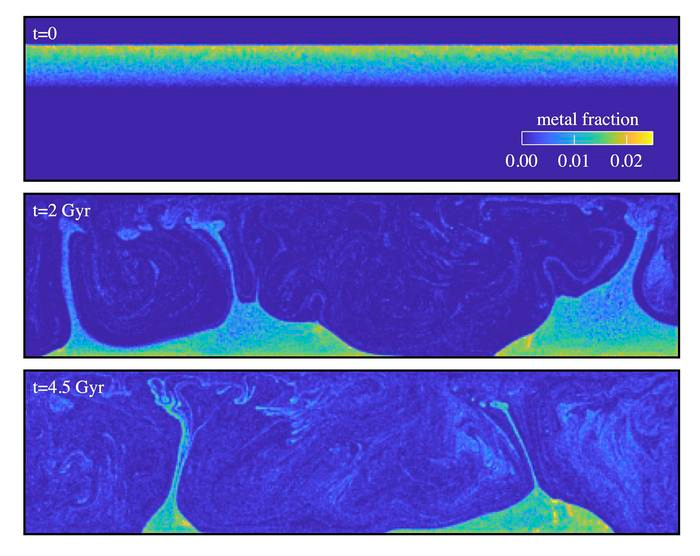Metals like gold and platinum are precious because they are so rare in the Earth’s crust and mantle. However, they’re not as rare as we would expect them to be. Existing models of the Earth’s formation indicate many heavy metals should have sunk to the core. Humanity’s only exposure should then have been to tiny amounts delivered by late-arriving meteorites. Clearly, this is wrong, and a new model offers an explanation of why.
Early Earth was a very hot place. The heat released from gravitational contraction was constantly added to through radioactive decay and the bombardment of planetesimals and large asteroids. All this created a molten ocean. Heavier elements should have sunk and lighter ones floated.
Moreover, with iron making up the bulk of the core, “siderophile” (iron-loving) metals that bond more easily with iron than oxygen were particularly likely to be captured. That includes gold, platinum, and iridium, as well as less well-known elements such as rhodium.
Once Earth’s solid crust had formed, smaller asteroid impacts would not penetrate it, and even highly siderophile elements (HSEs) would stay on the surface, or at least in the mantle. However, the quantity of minerals arriving this way was tiny compared to those from much larger objects capable of penetrating the mantle.
Yale University’s Professor Jun Korenaga and Dr Simone Marchi of the South-West Research Institute have provided a model that explains how some of the earlier-arriving HSEs are present in the mantle so they can be released in volcanic eruptions.
They argue a hit from such a large object would create a local magma ocean, harking back to a time when this was the fate of the entire planet.

Snapshot of mixing simulations of a giant metal-rich asteroid hitting the Earth at the time of impact, 2 billion years later, and today.
Image Credit: Jun Korenaga
Such a huge impact would have a complex effect, Korenaga and Marchi conclude. It would create a partially molten region beneath the local magma ocean with layers of solid silicate, molten silicate, and liquid metal. Although downwelling within the partially molten region would see much of the metals incorporated into the core, more would stay in the mantle than in alternative models, consistent with what we see today,
To explain the abundance of HSEs in the crust, some 0.5 percent of the Earth’s mass must have arrived after the core formed. That is considered plausible, but it’s thought most of that would have come in the form of a small number of giant objects, 1,000 kilometers (600 miles) across or larger. Anything that big would be expected to have developed a core of its own. Korenaga and Marchi’s challenge was to explain why these planetesimal cores didn’t end up merging with the Earth’s, leaving few HSEs behind.
The alternative is to posit much more substantial bombardment after the core’s formation, equal to perhaps 3 percent of the Earth’s mass. In this case, inefficient retention of the metals in the mantle could explain what we see. However, while 3 percent does not sound like a lot it is more than double the mass of the Moon.
The pair suspect the aftermath of the impacts described could produce the low-shear-velocity provinces that sit at the boundary of Earth’s mantle and core, which geologists have recently sought to explain.
The study is published in Proceedings of the National Academy of Sciences.
Source Link: Why Not All Of Earth’s Gold and Platinum Are Trapped In The Core